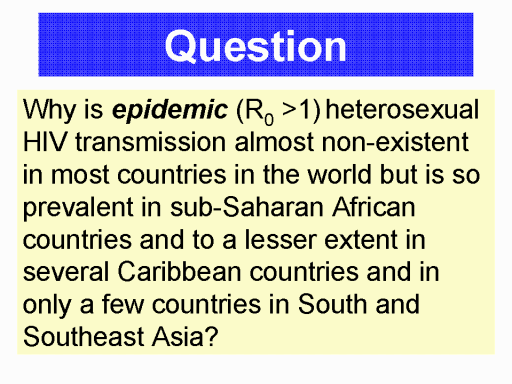| front |1 |2 |3 |4 |5 |6 |7 |8 |9 |10 |11 |12 |13 |14 |15 |16 |17 |18 |19 |20 |21 |22 |23 |24 |25 |26 |27 |28 |29 |30 |31 |32 |33 |review |
 |
The
politically correct answer to this question is that high HIV
prevalence in heterosexual populations is due to poverty and
discrimination, whereas an objective epidemiological answer is that
HIV prevalence is low in most heterosexual
populations because
the vast majority of heterosexuals do not routinely
have multiple and concurrent sex partners and
the infectivity of HIV via vaginal intercourse is
very low in the absence of facilitating factors.
Factors that create the conditions for a “perfect
storm” of HIV/AIDS in sub-Saharan African populations include:
From
20% to 40% of sexually active males and females in
many SSA countries have multiple and concurrent
sex partners on a routine basis.
A high proportion of sex partner exchanges in SSA are on a
weekly or monthly basis within small but overlapping sex networks
or groups.
The prevalence of facilitating factors that can
greatly increase the risk of sexual HIV transmission is from 1 to 2
orders of magnitude higher in SSA populations compared to most other
populations.
The prevalence of protective factors against sexual
HIV transmission (male circumcision and condom use)
, are low in most SSA populations. |